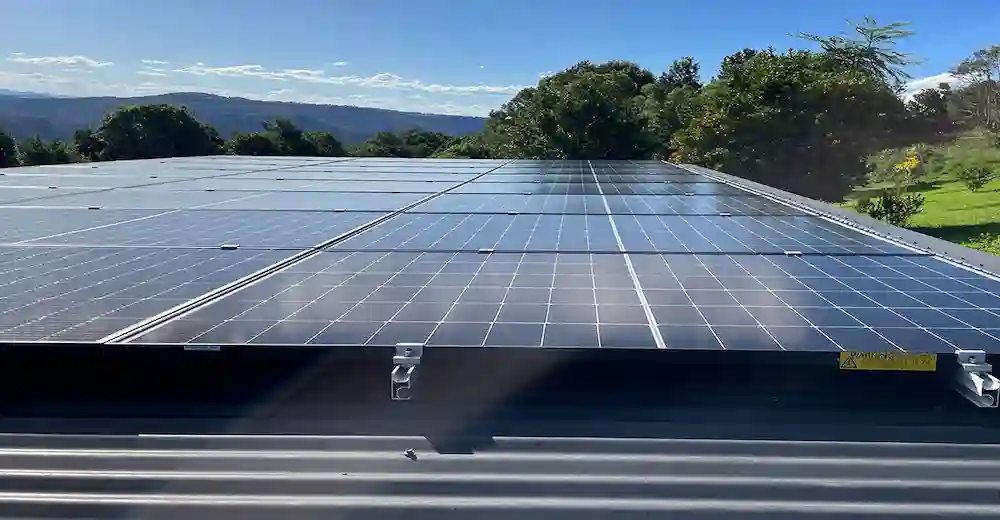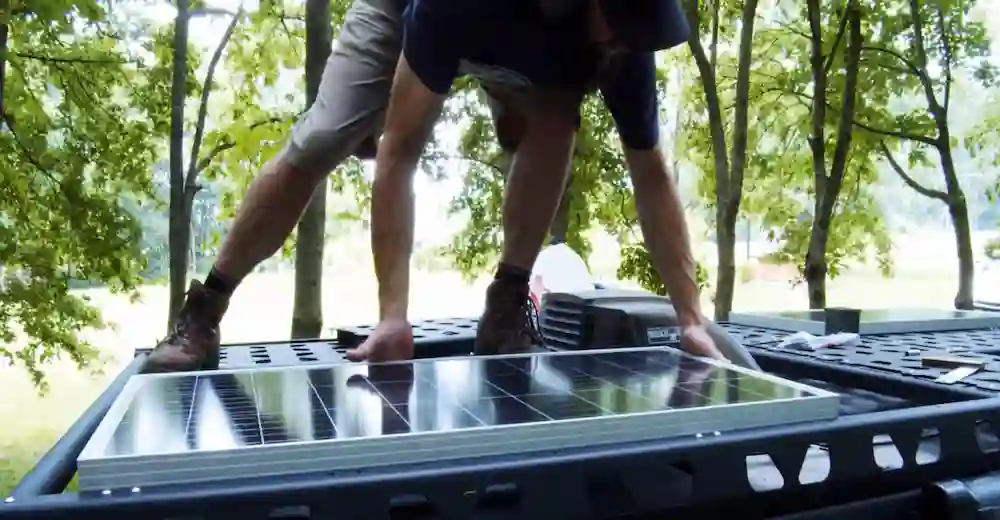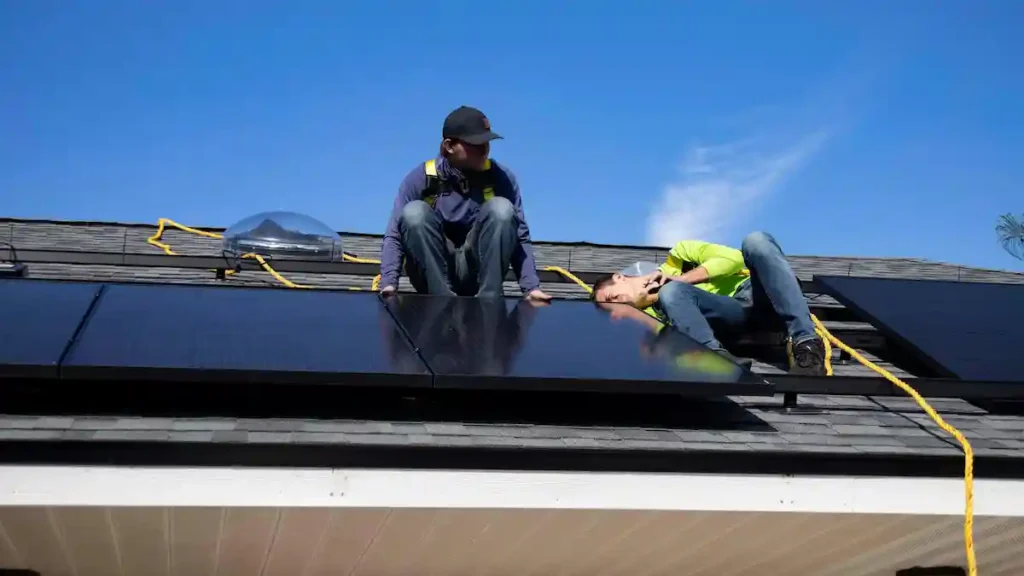If you have ever imagined living independently and free of utility bills and blackouts, the off-grid solar system is the solution you have been searching for. An off-grid setup gives you the freedom to generate energy independently from the grid and store it. It is an ultimate step in self-reliance for most, be it a vacation cabin, a traveling RV, or a primary home. Before setting up, however, it is important to understand how off-grid solar systems function, what equipment they require, what their costing is, and whether or not it will suit your lifestyle.
This guide will walk you through everything you need to know to choose a solar system for off-grid living in 2025, in simple language with practical examples that anyone can follow.
Understanding What an Off-Grid Solar System Really Is
An off-grid solar system is more than a few panels propped up on your roof. It is a carefully designed combination of components that work together to capture, store, and deliver electricity to your appliances and devices.

Image credit to nuway solar
At the core of the system are the solar panels, which absorb sunlight and convert it into direct current (DC) electricity. That electricity then passes through a charge controller, which regulates the flow of energy into a battery bank. The batteries are where all your power is stored for use at night or on cloudy days. Finally, an inverter converts that stored DC electricity into alternating current (AC), the type of power used in homes and by most appliances.
In a nutshell- solar panels collect, batteries store, and the inverter makes use of it. Without one of these components, this system would be blind.
Why People Choose to Go Off-Grid
Going off-grid is not all about saving electricity bills. Some people consider it a matter of independence. Once you step out of the grid, you are no longer subject to the rise of electricity rates, power outages, or the utilities’ restrictions. Some homeowners make the switch simply because their homes are located in remote areas where the grid cannot even reach. Others do it for the sake of living sustainably and reducing their dependence on fossil fuels.
If going on an off-grid solar system is properly done, it gives you an extra layer of peace of mind. Your lights remain on; your refrigerator stays up; your phone stays charged, and more-the work when nature seems determined to bring about darkness across the land in storm and blackout. This affords energy security that the traditional grid connection cannot guarantee.
Choosing the Right Size for Your Off-Grid Solar System
How many panels do I need? This is perhaps the most common question that people will ask about systems of solar power for off-grid living. You see, the answer will depend on how much electricity you consume and how much sunlight is available where you live.
You need to start by figuring out how much energy you want on a daily basis, which is in kilowatt-hours (kWh). This is determined by adding up the wattages of all appliances and devices you would like to use-lights, refrigerators, T.V.s, laptops, water pumps, and the like-each multiplied by how many hours they are expected to operate in a day. Once the total amount of daily consumption in kWh is known, divide this by the peak sun hours in the region. That figure will show a rough estimate of the necessary solar panel capacity.
For instance, let us say that your cabin burns about 15 kWh per day and receives about five hours of good sunlight daily. Dividing 15 by 5 tells you that you would require about 3 kW of solar panel capacity, not accounting for storage. From that point, you would size your battery bank for a minimum of two to three days of use without sun, which is the standard for off-grid systems.
Sizing can seem intimidating at first, but once you get to know your energy habits, it becomes fairly easy to design a system that fits into your lifestyle.
Costs of an Off-Grid Solar System in 2025
As would be expected, the costs for off-grid solar systems vary widely with system size, components, and installation. Small DIY kits for cabins, tiny homes, or RVs might sell for just a few hundred to a few thousand dollars. Fully capable systems, on the other hand, large enough to be the main power for an entire home, can easily range from $15,000 to $40,000 depending on whether the owner installs it or hires professionals.
Batteries are usually the most costly part of the system. Conventional lead-acid batteries are cheaper upfront but have a very short life span and are less efficient. Lithium batteries are costly initially but are long-lasting, capable of fast charging cycles, and just simply reliable in terms of energy discharge. More homeowners today prefer lithium batteries because this choice assures them of long-term savings and reliability.
When planning an off-grid solar system budget, it also makes good economic sense to consider installation as well as permits for the system plus backup sources of power like generators if you want to include them as insurance.
Off-Grid Solar Kits vs. Custom Systems
If you are a beginner, you may wonder whether to go for a pre-packaged solar kit or custom-design an off-grid system. Kits are convenient, as they contain everything you need: panels, batteries, inverters, and charge controllers that work together, most of the time, following instructions that facilitate easy DIY installation.
Custom systems are tailored to meet your exact needs part by part, which gives you flexibility but demands technical know-how. If you are trying to run something simple like an RV, the kit approach might be more appropriate. For a large off-grid house with many appliances, a custom install designed by a professional is probably the safer route.
Considerations for Installation
Off-grid solar systems require more than just mounting panels over the roof. It is more than just placing a panel that faces south and tilting it at an angle about latitude. Sometimes these trees and buildings steal half of the performance. Good place selection is needed.
Align wires to avoid inefficiencies or hazards. Most DIYers even go ahead to install their own set, but hiring a professional saves time, assures safety, and possibly wouldn’t be too cheap for bigger setups, also. Furthermore, improper installation does not only translate into poor performance but may also be a potential hazard for large battery banks, mainly because of their risk for fires.
Living With an Off-Grid Solar System
Once your system is set up, living off-grid requires a paradigm shift: suddenly, you’d learn to be aware of energy consumption-most especially during the cloudy stretches or high-consumption days. Many homeowners do keep at least a small generator available “just in case,” although, thanks to modern lithium batteries and the number of panels, lesser and lesser use is made of generators these days.

Another part of the lifestyle is maintenance. Occasionally, panels need cleaning; batteries need monitoring; and inverters should be checked regularly to make sure everything is functioning properly. The good news is that most modern systems are very reliable, and once you get used to your setup, maintaining it becomes second nature.
Incentives and Financial Benefits
There is a tax credit and incentive for solar installations in the U.S. and many other countries to make the alternative energy source cheaper. Currently, all homeowners can write off a great part of their expenses related to solar installation-including batteries-on tax under federal solar credits. Some states and local utilities also offer special rebates, grants, or property tax exemptions for renewable energy systems. Even though you won’t be connected to the grid, this incentive stands to reduce the cost of going solar by quite a bit for off-grid systems.
Is an Off-Grid Solar System Right for You?
Not everyone reaches the point where they are comfortable going completely off-grid. A grid-tied solar system with battery backup will work better for some people, giving them the peace of mind that they have stored electricity as backup when required, while they can connect to the main grid during unforeseen emergencies. However, for full independent living, especially if the place is remote and the last thing one wants is access to an electric grid, or for those who get a kick out of producing their own electricity, off-grid solar is just perfect.
It comes down to how much energy you need, how much willing a person is to spend, and your inclination to manage your own system in the end. With some effort in planning and modern technology, combined with just some adjustment in lifestyle, living off the grid even at 2025 becomes an attainable dream.
Conclusion
A solar system isn’t just about panels and batteries; it’s a freedom, sustainability and control of one’s power. Off-grid solar gives independence, whether you build a new homestead, outfit an RV or simply want to live without so much connection to the utility company. Careful planning is the most important, along with choosing the right equipment and knowing how to adjust your energy use in balance with your system’s capabilities.
With technology improving and a downward trend in costs, it is going to be even easier for people to live off-grid in the coming years. If you’re chasing energy independence, now is as good a time as any to start.
Author
Top Solar Picks, founded by John, a Solar Energy Writer and Researcher with over 12 years of experience in renewable energy, is dedicated to helping homeowners and businesses make informed, data-driven decisions about solar power. John’s expertise and research pr...

